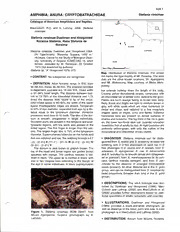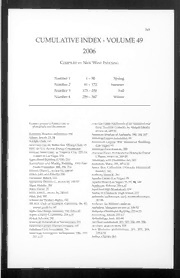
Roadmap for General Aviation Aging Airplane Programs - FAA PDF
Preview Roadmap for General Aviation Aging Airplane Programs - FAA
FAA General Aviation Roadmap for Aging Airplane Programs Table of Contents Section Page I. Executive Summary 1 II. Purpose 3 III. Scope 3 IV. Background 4 V. Stakeholders 6 VI. The Roadmap 9 a. FAA-Led Initiatives 12 b. Industry-Led Initiatives 28 c. Future Initiatives – FY08 and Beyond 38 VII. Summary 40 Appendix 41 i List of Acronyms AAI Office of Accident Investigation AC Advisory Circular ACO Aircraft Certification Office AD Airworthiness Directive AEA Aircraft Electronics Association AFS Flight Standards Service AIR Aircraft Certification Service AMT Aviation Maintenance Technician AOPA Aircraft Owners and Pilots Association ASI Aviation Safety Inspector ASTM ASTM International AVS Aviation Safety CAR Civil Air Regulation CFR Code of Federal Regulations COS Continued Operational Safety COSM Continued Operational Safety Management DAH Design Approval Holders DER Designated Engineering Representative EAA Experimental Aircraft Association FAA Federal Aviation Administration FAAST Federal Aviation Administration Safety Team FDR Flight Data Recorder FSDO Flight Standards District Office FY Fiscal Year GA General Aviation GAMA General Aviation Manufacturers Association IA Inspection Authorization NIAR National Institute for Aviation Research NTSB National Transportation Safety Board PAMA Professional Aviation Maintenance Association RAS Risk Analysis Specification SDR Service Difficulty Report SMS Safety Management System SMSG Safety Management Steering Group STC Supplemental Type Certificate TC Type Certificate TSO Technical Standard Order ii I. EXECUTIVE SUMMARY In 1991, Congress mandated that the Federal Aviation Administration (FAA) establish an Aging Airplane Program. The focus of this program is age-related structural problems with airplanes used in public transportation. At the time, Congress specifically excluded the general aviation (GA) fleet of airplanes from the mandate. However, the FAA determined that as the GA fleet continues to age, there is a concern about ensuring the continued airworthiness of the diverse GA fleet. The wide variety of designs and operational uses of the GA fleet presents unique challenges to both industry and regulators to ensure the continued safety of these airplanes. The Small Airplane Directorate introduced various programs to address continued operational safety issues associated with the aging GA fleet. These programs include addressing structural issues on specific make and model airplanes, addressing aging airplane wiring concerns, and conducting research focused on aging concerns with small airplanes used in commuter service. Efforts like these have been successful. However, the effects of aging on GA airplanes have continued to cause service difficulties, incidents, and accidents. In some cases, the effects of aging have caused primary component failures, and some of those failures have led to fatal accidents. As a result, the Small Airplane Directorate recognizes that we need to do more to address the effects of aging on GA airplanes. To guide our future efforts in addressing the effects of aging on GA airplanes, the Small Airplane Directorate developed an FAA Aging GA Roadmap (Roadmap). This Roadmap will serve as a guide to proactively manage the overall airworthiness of aging GA airplanes. It will unite all aging small airplane initiatives under a single program for effective management of continued airworthiness issues. The Roadmap will primarily focus on nonregulatory solutions. This boundary serves as a commitment by the FAA to seek enhanced guidance and processes recognized by industry as positive methods for managing the continued airworthiness of the aging GA fleet. The Roadmap aligns with the broader effort underway within the Aircraft Certification Service (AIR) and Aviation Safety (AVS) to develop and implement a Safety Management System (SMS). Several people involved in the creation of the Roadmap have played key roles in Phases I, II, and III of AIR’s SMS development effort. Through its extensive participation in AIR SMS, the Small Airplane Directorate has ensured that the Roadmap aligns with AIR SMS principals and design requirements. In addition, participation in AIR SMS has also allowed the Small Airplane Directorate to share the tools and techniques it has developed with the rest of AIR, and to help standardize the use of such tools in the future through robust SMS processes. The four major focus areas of the Roadmap are: • Proactive identification of safety concerns • Data driven risk assessment and risk management • Availability of data and parts • Maintenance and inspection 1 In each area, education and training play a key role in achieving success. The Roadmap introduces 12 initiatives (FAA-led and Aging Airplane Committee-led) that will address the four focus areas and their associated education and training needs. Several of the initiatives will extend into fiscal year (FY) 2008 and beyond. The table below outlines the Roadmap initiatives. Given sufficient resources, we will develop these initiatives in the fiscal years shown. FY07 FY08 FY09 and FAA-Led Initiatives beyond 1. Write Guidance for Fatigue Management of Older Airplanes x x x 2. Develop Structural Life Limits Database x x x 3. Develop Risk Assessment and Risk Management Methods x x x 4. Support Development of ASTM Wiring Standard x x 5. Conduct FAA “Educate and Train” Programs x x x FY07 FY08 FY09 and Industry-Led Initiatives beyond 1. Define Term “Aging Aircraft” x 2. Assess Operation in More Aggressive Fatigue Spectra x x 3. Improve Quality of Education and Training for Mechanics, x x Owners, and Operators 4. Evaluate and Improve Repair Data Availability x x 5. Evaluate and Improve Design Data Availability x x 6. Evaluate and Improve Replacement Parts Availability x x x 7. Improve the Service Difficulty Reporting Process x x x 2 II. PURPOSE The purpose of the Federal Aviation Administration (FAA) General Aviation (GA) Roadmap (hereon referred to as Roadmap) is to develop a plan to proactively manage the risks associated with the continued airworthiness and operation of the aging GA fleet. Though specific to the GA fleet, many of the initiatives and programs introduced in the Roadmap may be applicable to other categories of airplanes and rotorcraft. The Roadmap provides an overview of the respective projects, programs, and other initiatives the FAA and industry are planning and developing to improve overall airworthiness of the GA fleet. The Roadmap fits within the broader initiatives identified in the Aircraft Certification Service’s (AIR) Safety Management System (SMS). III. SCOPE The Roadmap provides a framework for the FAA to use in addressing the wide spectrum of issues associated with the aging GA fleet. It promotes information sharing and collaborating between the FAA and industry trade groups, owner/operators, and design holders. The Roadmap augments and unites existing FAA programs that address specific continued safety issues associated with the aging GA fleet. The Roadmap focuses in four major areas: • Proactive identification of safety concerns • Data driven risk assessment and risk management • Availability of data and parts • Maintenance and inspection Each area contains important elements. In some cases, the elements in one area interlace with other areas. This Roadmap identifies those elements, states why they are important and what actions the FAA plans to address them. In all areas, education and training are the keys in achieving success. 3 IV. BACKGROUND General Aviation Picture Today Part 23 CAR 3 • About 150,000 airplanes • Similar to CAR 3 • Average age > 35 years • 10,000 airplanes • Majority are aluminum • Flown 100 -150 hrs avg. annually • Significant % are IFR equipped Bulletin 7 CAR 4 & 4a • Wood • Tube and Fabric Experimental • Aluminum • Over 20,000 airplanes • Flown 60-70 hrs annually Other • Fastest growing segment • Gliders Special Use • War birds (WWII, Korea, • Balloons • Agricultural Vietnam) • Airships • Firefighting • Exhibition (gliders, racing) • Light- • Survey, etc. Sport The FAA is responsible for overseeing the continued airworthiness of more than 150,000 type-certificated GA airplanes over 30 years old. Most of these airplanes were designed to Civil Air Regulations (CAR) 3 standards established in the 1950s or earlier and were produced before the 1980s. A small portion of the fleet is designed to early design standards – Aero Bulletin 7a, CAR 4, and CAR 4a. Many are vintage airplanes designed or produced before World War II. Many of the original type design holders for these airplanes are no longer in business. This absence creates extra burdens on the industry because much of the type design data critical to continued airworthiness issues is either not available or is incomplete. Without type design data, repair and alteration of these airplanes becomes more difficult at a time when the aging process has made it most important. The FAA recognizes that industry, in order to continue to maintain safe airplanes, needs additional programs and procedures to assist in this effort. In 1991, Congress mandated that the FAA establish an Aging Airplane Program to focus attention on age-related structural problems with the air carrier fleet (14 Code of Federal Regulations (CFR) part 121 and part 135 operators). At that time, Congress specifically excluded the GA fleet of airplanes from the mandate. The Small Airplane Directorate remained involved in the Aging Airplane Program regulatory and policy action and began identifying aging issues that had potential to affect the GA fleet. 4 The Small Airplane Directorate began developing goals for addressing aging issues of the GA fleet. These include: • Understanding the public expects aviation safety will continue to improve • Moving from a reactive to a proactive approach to GA safety • Developing risk assessment and risk management tools • Addressing issues associated with longer life cycles than expected by the original design • Developing aging airplane specific programs through FAA partnerships with industry • Increasing safety information sharing within the GA industry • Using advanced technology to develop better methods for aging inspections • Optimizing existing resources available to address aging concerns • Providing training and education resources for pilots, owner/operators, and maintenance personnel on aging airplane issues In January 2000, the Small Airplane Directorate hosted an aging GA Summit Public Meeting. At the public meeting, participants provided a wide range of perspectives on issues affecting owner/operators of aging airplanes. The most notable accomplishments resulting from the meeting are the implementation of the Airworthiness Concerns Process and the formation of an ad hoc team. The ad hoc team produced the “Best Practices Guide for Maintaining Aging GA Airplanes” and made recommendations for enhancing safety in the continued maintenance and operation of vintage airplanes. Despite these successes, important issues remain unresolved. In recent years, the GA community experienced several accidents attributable to aging issues within the fleet. With the growing number of GA airplanes experiencing age related failures, it is evident that a proactive approach is needed to offset the increasing risks of age related problems within the GA community. In 2001, the Small Airplane Directorate established a Continued Operational Safety (COS) Branch responsible for Continued Operational Safety Management (COSM) activities. The COS branch includes a Supervisory Aerospace Engineer, Aerospace Safety Engineers, an Airworthiness Directive Coordinator, Technical Writer-Editors, a Service Difficulty Report Coordinator, and a Safety Recommendation Coordinator. A team chartered in 2002 and led by the COS Branch developed and implemented a COSM Program for GA products. That team’s actions resulted from the Aircraft Certification Service (AIR) Safety Management Steering Group (SMSG) Initiatives Roadmap. The SMSG Initiatives Roadmap was formed from the expected outcomes of the safety management goals of the AIR Strategic Plan. The team produced the COSM Program Plan and updated the plan as issues emerged from the SMSG. The team revised the COSM Program Plan in January 2006. This Roadmap is an extension of the COS Branch team’s work, but expanded and adjusted to address recent age-related issues and accommodate the current SMS vision. The Appendix provides a more in-depth background of all Small Airplane Directorate COSM activity to date. 5 V. STAKEHOLDERS An important aspect of the Roadmap is identifying the stakeholders involved. By identifying those affected by the increasing need for aging airplane actions, we can include them in developing solutions that will satisfy all interested parties. All stakeholders have specific responsibilities for continued operational safety of the industry. a. FAA Both AIR and Flight Standards Service (AFS) have strong commitments to aging airplane programs. It is imperative that both organizations unite in the leadership and oversight they provide to the GA community. Success depends on both AIR and AFS management committing resources to accomplish the goals outlined in the Roadmap. As new airplane designs emerge, how those designs age will be a critical concern of the engineering process. AIR must provide the oversight to ensure the continued operational safety of a design remains intact as it ages. A critical airworthiness responsibility is oversight of the GA fleet and how it ages. The Office of Accident Investigation (AAI) provides information on unsafe conditions and trends from accident investigations. This can be important in identifying issues that may require development of aging aircraft safety enhancements. AFS provides oversight of the ongoing continued operational safety of all GA airplanes. It is important for Aviation Safety Inspectors (ASIs) to understand how important the aging process is as it relates to continued operational safety. Oversight of the industry by ASIs is critical in maintaining the safety of the expanding GA community. Through education and training, AIR and AFS personnel must keep abreast of new technology and processes designed to complement aging airplane programs. b. FAA Designees Many owner/operators will modify, repair, inspect, and rebuild their airplanes as the GA fleet continues to age. The FAA Designee community provides the engineering expertise and data approval for these critical airworthiness functions. It is important for all designees to understand the growing concerns with aging. A primary responsibility for all designees is continued education and training in their discipline. It is important for the designees to remain current as aging airplane technology and processes improve. 6 c. Industry Organizations Industry organizations, such as the Aircraft Owners and Pilots Association (AOPA) and the Experimental Aircraft Association (EAA), represent interests in the GA community. They provide leadership to their constituents in matters concerning the continued safe use of GA products. Many of these organizations lead the industry in providing education and training to their members. Participation by these organizations with the FAA in developing aging airplane programs is a priority. d. General Aviation Type Design Holders/Manufacturers The type design holders and manufacturers of GA products invest both capital and human resources in our industry. It is imperative that they use their expertise and experience to develop programs intended to maintain the safe operation of their products. The expertise of the type design holder should lead to engineering solutions to aging airplane issues. Representative organizations of the type design holders and manufacturers, such as the General Aviation Manufacturers Association (GAMA), provide additional expertise to aging airplane programs. These organizations often are the central voice for GA type design holders and manufacturers and should be an integral part of any aging GA program development and review. e. General Aviation Type Clubs Type clubs represent owner/operators of specific make and model airplanes. Type clubs keep their members aware of important information, both technical and non-technical. A few type clubs are even type certificate holders. Type clubs offer an excellent conduit for training and education to the GA community. The FAA continues work with type clubs to build a strong owner/operator base to support general aviation aging airplane programs. f. Individual Owner/Operator The ultimate customers of any aging airplane program are the owner/operators of the product. Any program that improves the safety of operating aging airplanes will benefit them directly. It is imperative for owner/operators to understand the need for aging airplane programs and the importance of participating in all aspects of the programs provided. Ongoing education and training provided by other stakeholders is critical to this group. Success of the Roadmap initiatives is dependent upon owner/operators understanding the importance of the initiatives in day-to-day operation of GA airplanes. g. Vendors (Other Design Approval Holders) Vendors provide the production and technical support of thousands of individual components used in the finished airplane product. These components age over time. It is important for this group to understand the aging process and develop programs to monitor and adjust the continued operational safety processes of their products. Research continues to indicate that system components are as critical in the aging process as structural items. 7
Description:The list of books you might like

The Sweetest Oblivion (Made Book 1)

Haunting Adeline

Credence

$100m Offers

Anton

A Defense of the Nicene Definition (De Decretis)
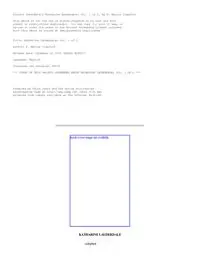
Katharine Lauderdale vol 1 of 2 by F Marion Crawford

ERIC ED362642: Developments in the Curriculum for the Swedish MSc Programme in Agriculture.
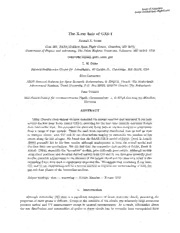
The X-ray Halo of GX5-1
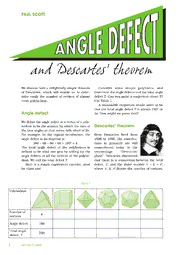
ERIC EJ743583: Angle Defect and Descartes' Theorem

Les tribulations d'un chinois en Chine by Jules Verne
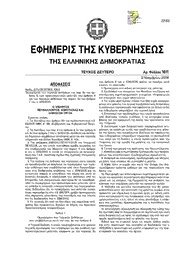
Greek Government Gazette: Part 2, 2006 no. 1611
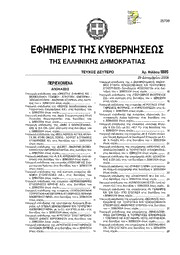
Greek Government Gazette: Part 2, 2006 no. 1885

Cada hora muere una persona por culpa del tabaco en Andalucía
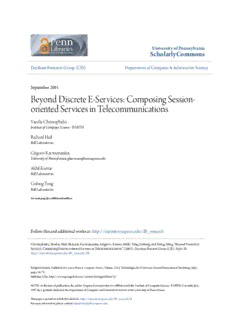
Beyond Discrete E-Services

Unflinching Gaze: Morrison and Faulkner Re-Envisioned
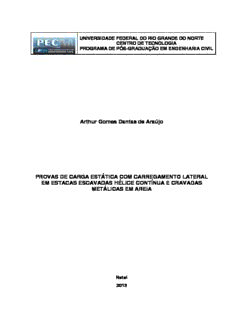
Arthur Gomes Dantas de Araújo PROVAS DE CARGA ESTÁTICA COM CARREGAMENTO ...
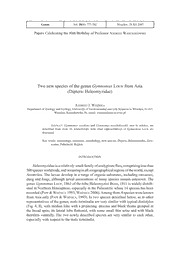
Two new species of the genus Gymnomus Loew from Asia (Diptera: Heleomyzidae)
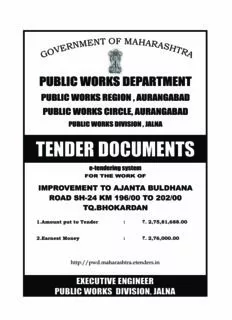
1 AJANTA BULDHANA.cdr
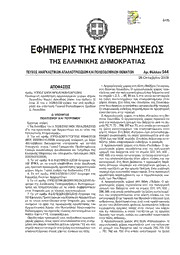
Greek Government Gazette: Part 10, 2009 no. 544
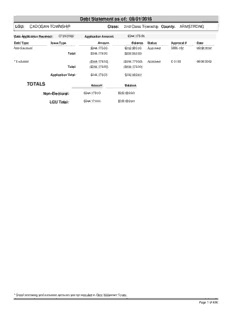
CADOGAN TOWNSHIP Class: County: ARMSTRONG

Design of Low-Voltage, Low-Power Operational Amplifier Cells
